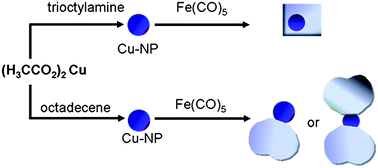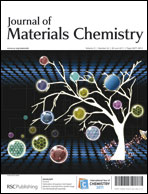Cu@Fe3O4 heteroparticles with distinct morphologies were synthesized from organometallic reactants. The shape of the magnetic domains could be controlled by the solvent and reaction conditions. They display magnetic and optical properties that are useful for simultaneous magnetic and optical detection. After functionalization, the Cu@Fe3O4 heterodimers become water soluble. The morphology, structure, magnetic and optical properties of the as-synthesized heterodimer nanoparticles were characterized using transmission electron microscopy (TEM), X-ray diffraction (XRD), mössbauer spectroscopy, superconducting quantum interference device (SQUID) magnetometry, and dark field imaging. A special advantage of these heterodimers lies in the fact that the nanodomains of different composition can be used e.g. for the formation of nitric oxide (NO) through the Cu domain and heterodimer nanoparticles can be removed from the reaction mixture by means of the magnetic domain (Fe3O4).
You have access to this article
 Please wait while we load your content...
Something went wrong. Try again?
Please wait while we load your content...
Something went wrong. Try again?


 Please wait while we load your content...
Please wait while we load your content...